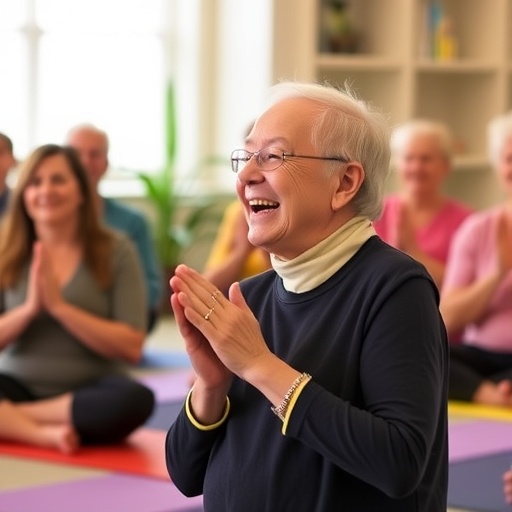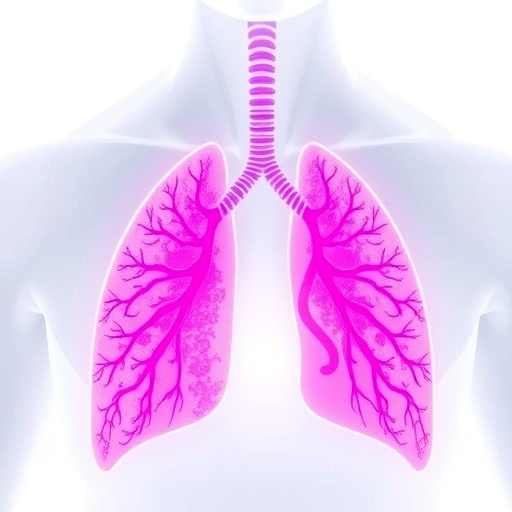Mexican Americans at higher risk

Credit: UT Health San Antonio
Do thinking and walking go hand in hand in determining the health course of senior adults? A study published by UT Health San Antonio researchers found that, indeed, the two functions often parallel each other in determining a person’s health trajectory.
The researchers analyzed data from 370 participants in the San Antonio Longitudinal Study of Aging (SALSA) and found that they grouped into three distinct trajectories. These classifications were based on the participants’ changes on a cognitive measure and a gait speed task over an average of 9½ years:
- Stable cognition and gait class (65.4% of the participants).
- Cognitive and physical vulnerability class (22.2%).
- Physical vulnerability class (12.4%).
“In our community-based sample of Mexican American and European American older adults aged 65 to 74 years old at baseline, the majority of individuals began the study with higher scores in both domains, cognition and gait speed. During follow-up, this group demonstrated resilience to age-related declines and continued to be functionally independent,” said study senior author Helen Hazuda, Ph.D., professor in UT Health San Antonio’s Long School of Medicine and the principal investigator of SALSA.
“In contrast, one-fifth of individuals began the study with lower scores in cognition and gait speed. They experienced deterioration in each domain during the follow-up period,” Dr. Hazuda said.
The third group of individuals, termed the physical vulnerability class, demonstrated stable cognition throughout the study, but their gait speed slowed over time.
2 effects, 1 root?
Cognition was assessed using English or Spanish versions of the Folstein Mini-Mental State Examination, a 30-item tool that assesses orientation to time and place, attention, recall, language and other aspects. Gait speed was measured with a timed 10-foot walk.
“For most of the population we studied, changes in cognition and gait speed were parallel, which suggests shared mechanisms,” said Mitzi M. Gonzales, Ph.D., lead author of the study and a neuropsychologist with the Glenn Biggs Institute for Alzheimer’s and Neurodegenerative Diseases, which is part of UT Health San Antonio.
Cognition and gait speed may be altered by blood vessel disease, brain tissue insults, hormone regulation, and abnormal deposits of amyloid beta and tau proteins in the brain, Dr. Gonzales said. Amyloid beta and tau deposits are well-known indicators of Alzheimer’s disease but may impact gait, too.
“Abnormal protein deposition promotes neurodegeneration and synaptic loss, which may induce dysfunction in brain regions governing cognition and gait,” said study coauthor Sudha Seshadri, M.D., professor of neurology in the Long School of Medicine and director of the Biggs Institute. “Another possibility is damage to white matter in regions integral to both cognition and gait coordination.”
Groundbreaking San Antonio research
SALSA investigators led by Dr. Hazuda launched the study in 1992 and completed the baseline examination in 1996. Follow-up examinations were conducted at 18-month intervals between 2000 and 2005.
Among the 370 participants in this new analysis, 182 were Mexican American and 188 were European American. The Mexican American participants were almost four times more likely than European Americans to be in the cognitive and physical vulnerability class, even after statistical adjustment for educational attainment, income and chronic medical conditions, Dr. Gonzales said.
Prevalence of a key risk factor in this group, diabetes, was significantly higher in Mexican Americans (23%) than in European Americans (7%). Diabetes was associated with a 4½ times higher likelihood of being part of the cognitive and physical vulnerability class.
Poor start, poor course
Individuals who entered the study with poorer cognition and slower gait speed went on to decline in both domains at an accelerated pace through the years of follow-up, Dr. Hazuda said.
“In this at-risk group, we observed steeper rates of decline over and above the low starting point,” Dr. Hazuda said. “This suggests that preventive efforts should ideally target young and middle-aged adults in which there is still time to intervene to alter the trajectories.”
Overall, individuals in the cognitive and physical vulnerability class and the physical vulnerability class had a five- to sevenfold increased risk of mortality in comparison to the stable cognition and gait class.
###
The International Journal of Geriatric Psychiatry published the study in April.
Acknowledgments
Funding is from the National Institute on Aging, the National Institute of Diabetes and Digestive and Kidney Diseases, and the National Center for Research Resources (USA).
Joint trajectories of cognition and gait speed in Mexican American and European American older adults: The San Antonio Longitudinal Study of Aging
Mitzi M. Gonzales, Chen-Pin Wang, Myla Quiben, Daniel MacCarthy, Sudha Seshadri, Mini Jacob, Helen Hazuda
First published: 12 April 2020
https:/
About us
The Long School of Medicine at The University of Texas Health Science Center at San Antonio is named for Texas philanthropists Joe R. and Teresa Lozano Long. The school is the largest educator of physicians in South Texas, many of whom remain in San Antonio and the region to practice medicine. The school teaches more than 900 students and trains 800 residents each year. As a beacon of multicultural sensitivity, the school annually exceeds the national medical school average of Hispanic students enrolled. The school’s clinical practice is the largest multidisciplinary medical group in South Texas with 850 physicians in more than 100 specialties. The school has a highly productive research enterprise where world leaders in Alzheimer’s disease, diabetes, cancer, aging, heart disease, kidney disease and many other fields are translating molecular discoveries into new therapies. The Long School of Medicine is home to a National Cancer Institute-designated cancer center known for prolific clinical trials and drug development programs, as well as a world-renowned center for aging and related diseases.
The University of Texas Health Science Center at San Antonio, also referred to as UT Health San Antonio, is one of the country’s leading health sciences universities and is designated as a Hispanic-Serving Institution by the U.S. Department of Education. With missions of teaching, research, patient care and community engagement, its schools of medicine, nursing, dentistry, health professions and graduate biomedical sciences have graduated more than 37,000 alumni who are leading change, advancing their fields, and renewing hope for patients and their families throughout South Texas and the world. To learn about the many ways “We make lives better®,” visit http://www.
Stay connected with The University of Texas Health Science Center at San Antonio on Facebook, Twitter, LinkedIn, Instagram and YouTube.
Media Contact
Will Sansom
[email protected]
Original Source
https:/
Related Journal Article
http://dx.




